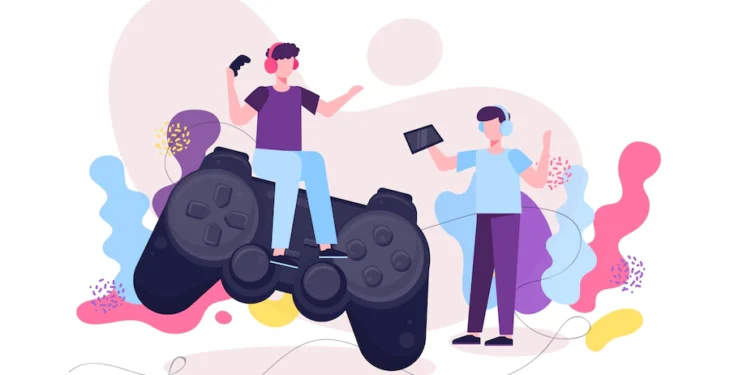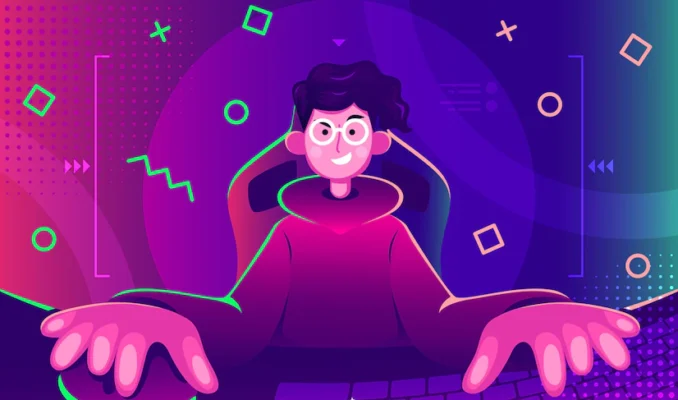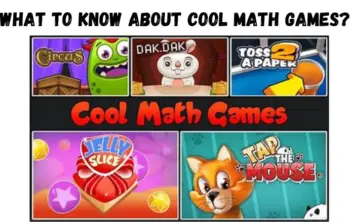What started as a niche business powered by arcade consoles has evolved into one of the essential entertainment industries around the globe.
As the gaming market expands, the translation of video games has become more critical, and the need for Video game translation services is more apparent. Video gaming is now an industry that is multi-billion dollars in size. It could be worth $138 billion by the time it reaches 2023. Although North America remains a stronghold in the use of video games, there is a significant increase in the Asian region.
The industry’s expanding global scale has vast revenues, and it challenges video game developers with localization. Nevertheless, video games attract players because they promise an immersive interactive experience that conforms to the user’s preferences in digital technology.
The Benefit of Video Game Translation
A good translation can help us feel a connection with the characters we’re engaged with. In the worst case, it transforms an otherwise stunningly developed game into a soulless world of confusion and wasted potential.
That is, if you wish for your game to realize its full potential, you should prioritize high-quality locales from the very beginning of the process of development. In the absence of this, it could prevent you from losing half of your worldwide audience, limiting the profit potential and even slowing the growth of your brand.
On the other hand, successful localization efforts can turn an obscure regional success into a global sensation. For an excellent example of this, check out every Nintendo game. Even though Nintendo’s Japanese company’s background cannot be without its blunders, the latest Nintendo games feature some of the most stunning video game localizations available on the market, which has led these characters to be household names in Japan and the US.
Why Is Video Game Translation So Challenging?
On the surface, video game translation is less complex than other forms. But, with the medium, various unique issues require particular focus. A few of these are technical. For example, certain games feature embedded text pieces restricted to a specific length.
This is a minor issue when switching from English to Japanese because Japanese occupies about 50% of the screen space as English. However, changing Japanese into English and from English to a more figurative language such as German may require translators to modify content to accommodate.
Other difficulties have a linguistic component. For example, the text in video games is usually altered according to the player’s preferences and actions. Therefore, scripts are written as interchangeable fragments instead of continuous narratives to accommodate this variation. Although this gives writers greater narrative flexibility, translators often use less context information than ideal.
For instance, a character is completing the standard fetch mission. A professional translation agency working on this task might get an English fragment that reads in the form: “Thank you for finding it for me!” Because English does not have specific grammatical patterns such as gender, this straightforward phrase may be complex in translation without context. For example, “you” can be formal or informal. Is “you” formal or informal plural, single or plural? What about “it” referring to a female or masculine object?
While none of these variables are relevant in English, they alter the meaning in the case of a language such as Spanish. However, as diligent as developers are in providing the proper context, fragments that need to be clarified like this one are often slipped through.
Issues That Make Translating Video Games Challenging:
The Reliance On Cultural References
Video games rely heavily on certain cultural norms to guide the player, make jokes, or expand the story. Translators need to know the meaning of these references in the market of the intended audience and which ones should be translated. The ability to capture the original game’s spirit and incorporate local references is a challenging task that could determine the reception of a game in the new market. Hence, one needs to consult specific LSPs, such as Arabic translation services, if the aim is to target the Arabic-speaking community.
Multimedia Elements
Video games typically incorporate text as an element of the game’s art to enhance the atmosphere and help orient players to the surroundings. Examples include game-specific signs, advertising, graffiti, artwork, and more. Also, music and background conversations can dramatically affect the game’s perception of place. However, when it comes to localization, a translation company has to decide which elements they want to translate and then implement the translations in light of the technological limitations.
Large Scope
It also provides the translation of the dialogue in a video game. It also includes names for characters, weapons, enemies, and locations, along with descriptions of quests, UI elements, and many more. Finally, in addition to playing the actual game, the marketing materials, such as guides, inserts, and other materials, must be accessible in all target languages. Together, these components can make translating games into one language difficult, not to mention the difficulty of localizing it for different markets.
Due to these limitations, developers of video games should prioritize translation right from the beginning of the design process, ensuring that all technological and creative procedures are compatible with later efforts to localize. For instance, teams must refrain from unnecessarily hard coding any language-specific information. They could also create extensive documentation that can help translators to deal with unclear fragments.
How Transcreation Helps Video Games Reach a Global Audience?
Transcreation is the term used to describe the translation of experiences and messages instead of words and sentences. Transcreated messages may be a different representation of the same rulings and phrases employed in the original text. The main goal is to preserve the original design of tone, the message, and the intention and place the elements within a new context.
Wrapping Up
Translators need to be aware of the source and target cultural context to create the original voice for an audience that is different. However, the process is worthwhile since it ensures that the translated content is in the same spirit as in the game itself.







